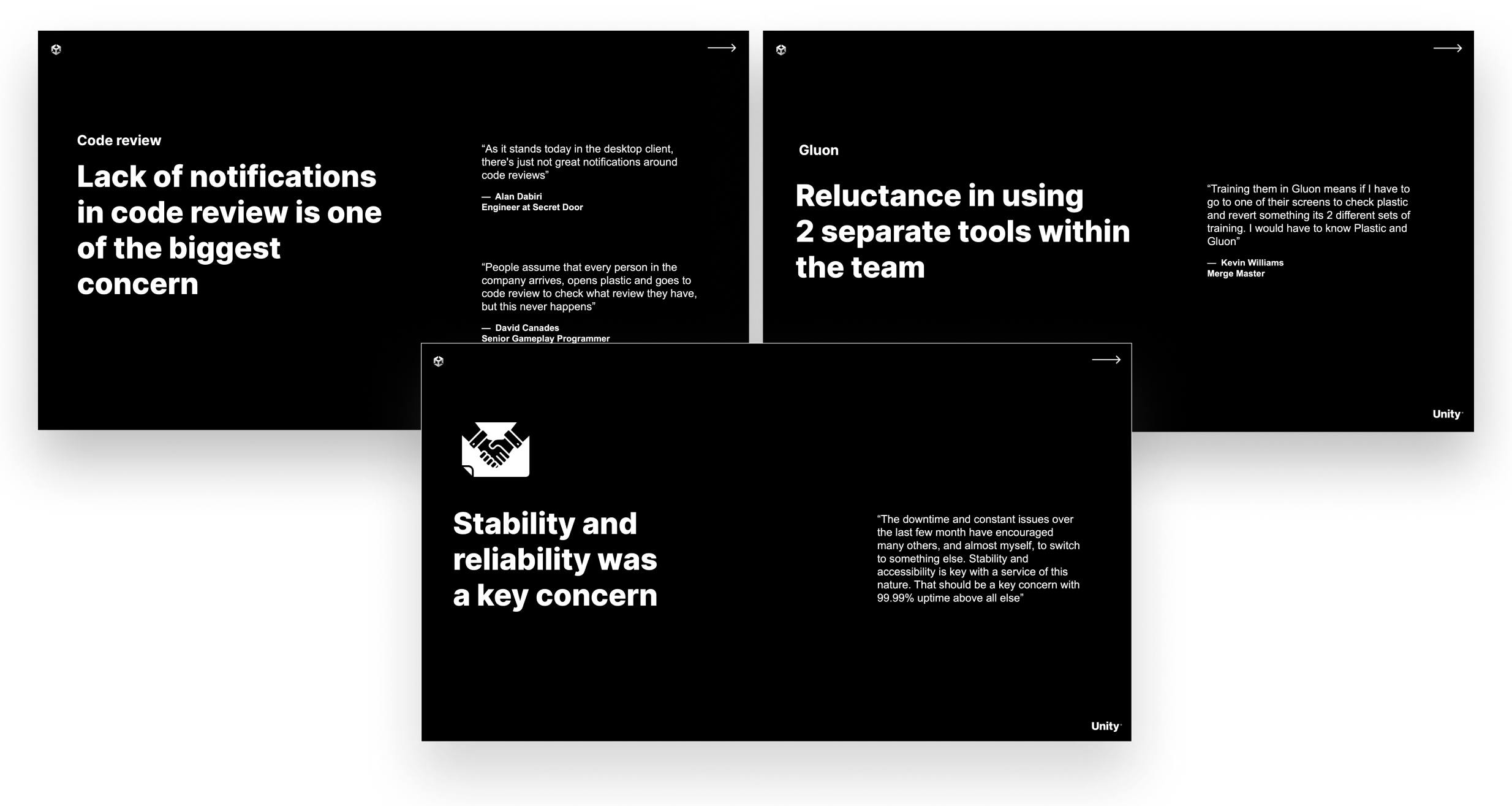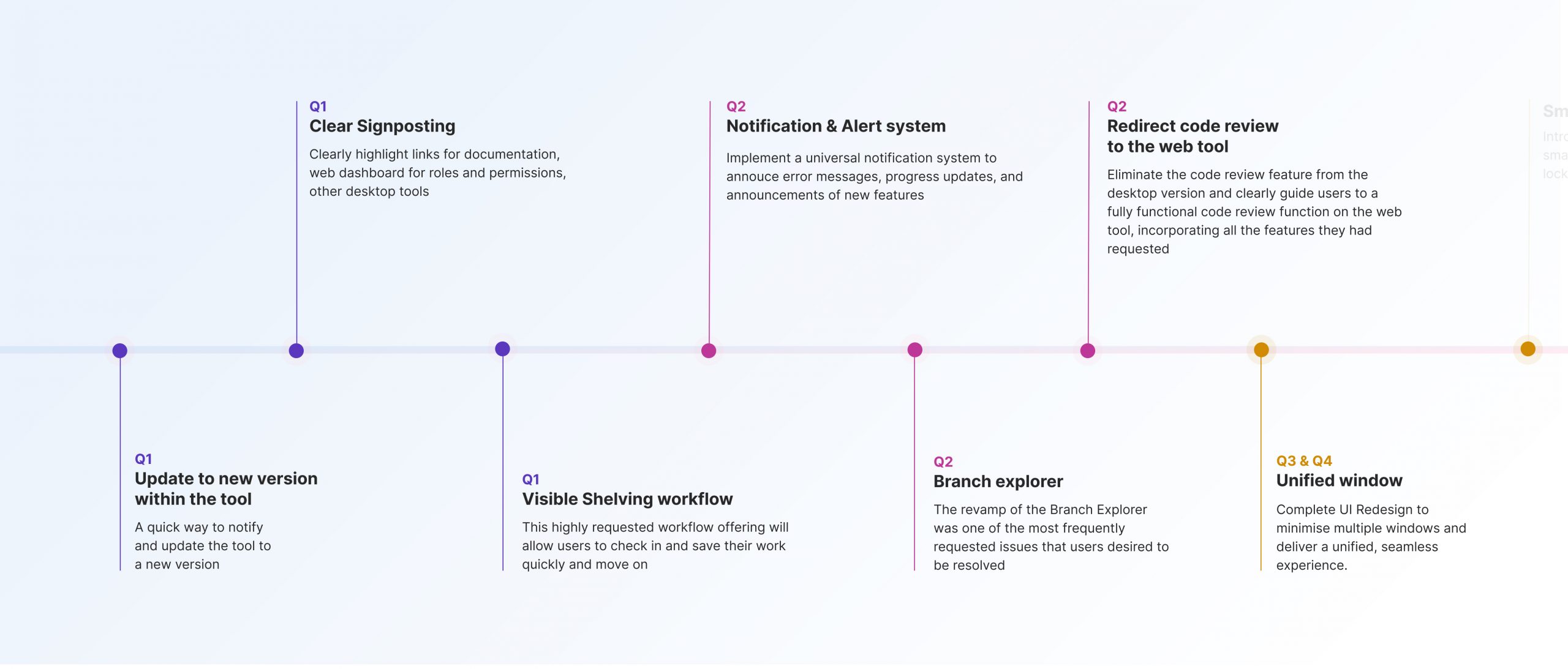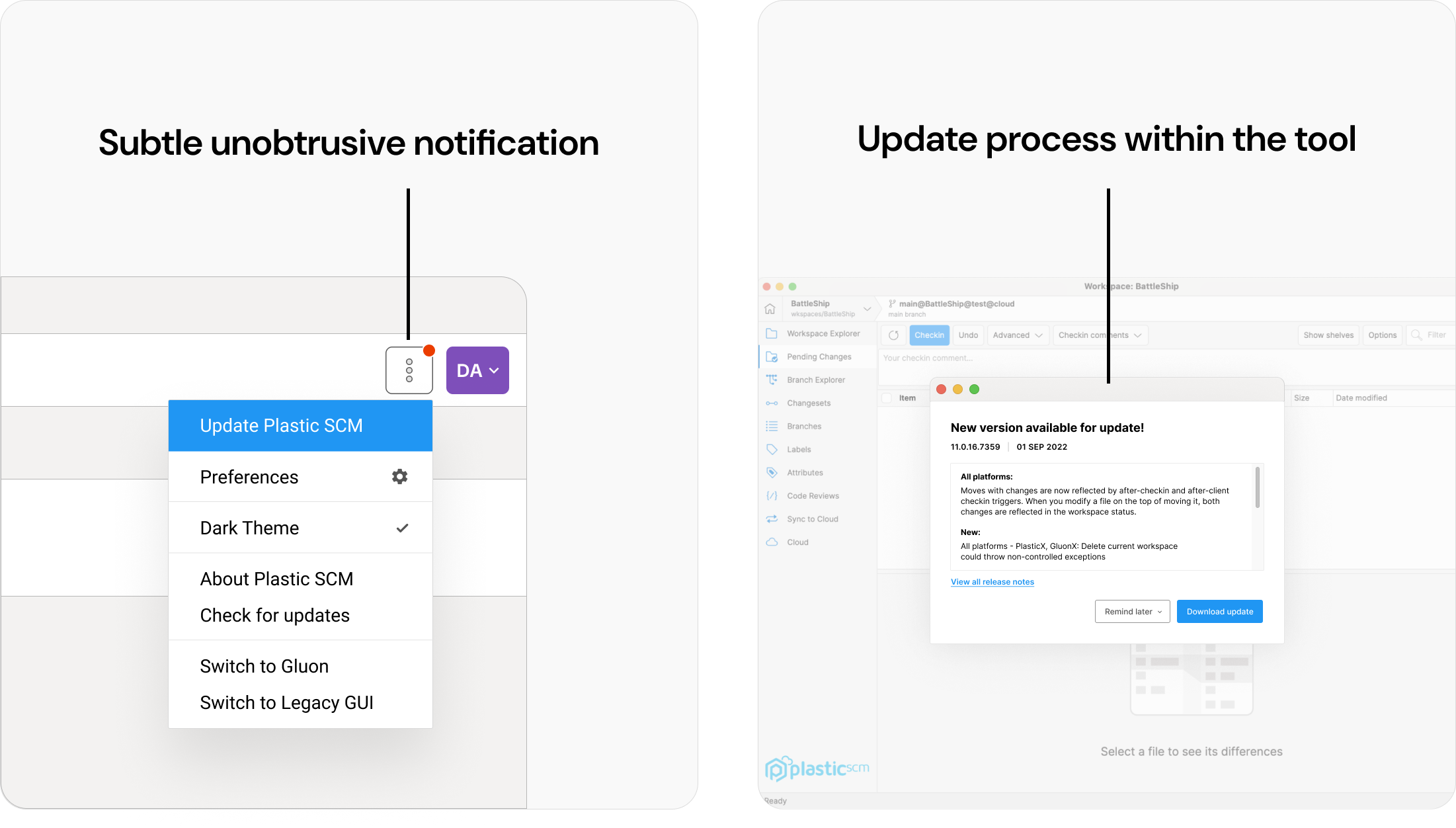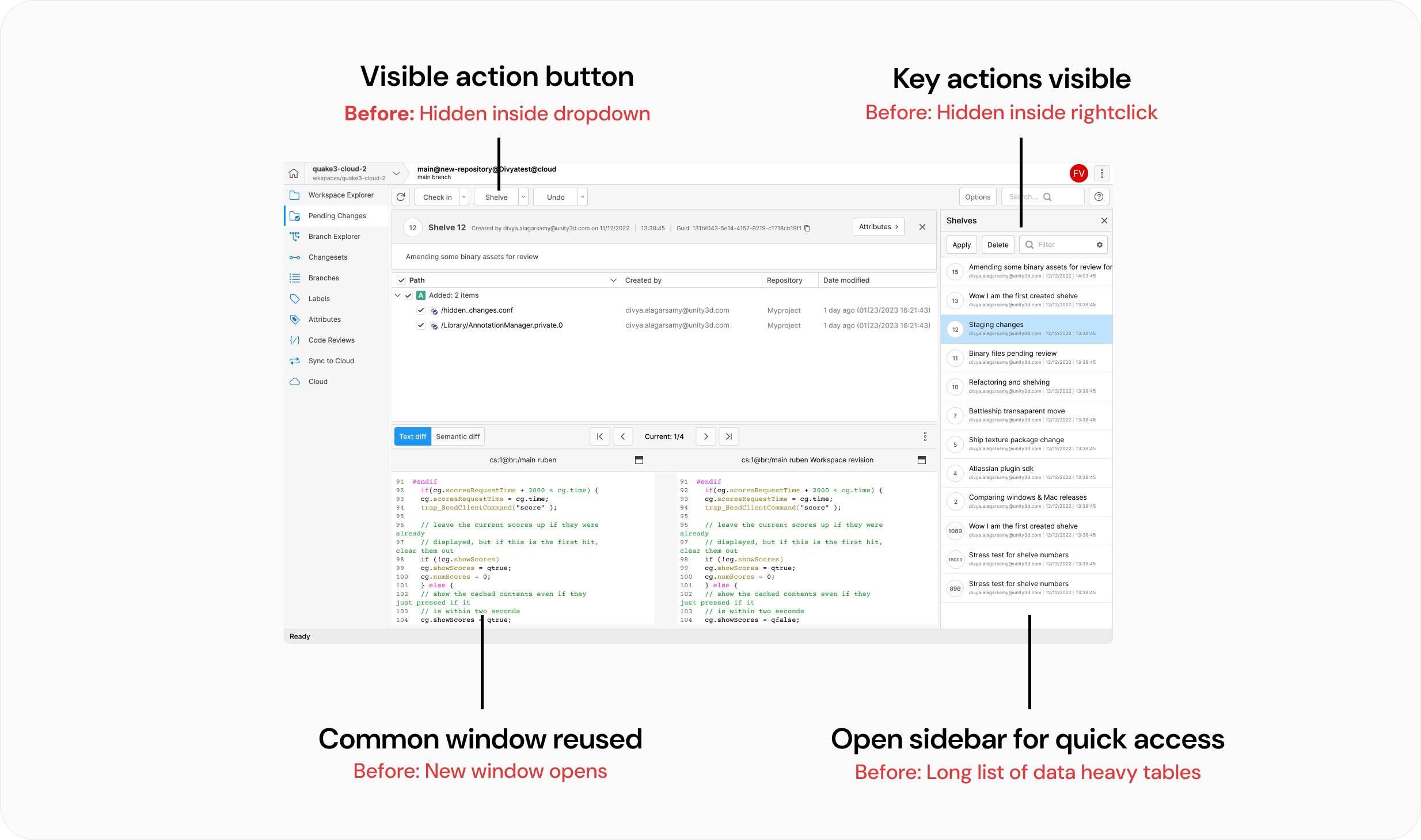CASE STUDY 1
Simplifying complex version control workflows to increase user adoption
Plastic SCM (now acquired by Unity and renamed to Unity Version Control System) is a versioning software for games. It's like Github but suited better for large scale games as it can hold huge amount of storage.
A representation of syncing action between game development and version control process
Core responsibilities
• User research & testing
• User interface design
• Product strategy
Framing the problem
Over the years Plastic SCM had become a huge feature factory with weekly releases catering to all customer requests. The workflows didn't integrate cohesively, there was no notification system to alert the new features, there was no easy way to update the software and users did not receive the right value from the tool. Moreover the novice users were starting to drop off due to the complexity of the tool.
When Unity acquired Plastic SCM, the main goal was to streamline the tool, remove feature bloat and make it more user friendly.
This initiative was essential for its integration with the rest of the Unity's game development tools.
Objective
Streamlining the end-to-end workflow to offer a reliable and seamless user experience for game developers
User Research
This marked our initial comprehensive design exploration for the product, requiring a thorough investigation. We delved into usage data and analyzed feedback from the annual customer satisfaction survey. Following this, we conducted user interviews to obtain direct insights regarding the behaviors highlighted by the data.
Gathering insights from usage data

Analysing customer satisfaction survey results

Presenting all the findings to senior stakeholders

The findings from all these studies were compiled and presented to three engineering teams, including the core team, as well as at the executive level townhall.
Plan of action
The overwhelming feedback from user interviews distinctly pinpointed the major problem areas that required prompt attention. We shaped these problem areas into a cohesive roadmap, structured by priority and workflows. Subsequently, the roadmap was segmented into initiatives slated for each quarter.
Delivering a outcome-driven road map for 2023

User interface design
In-product update process resulting in
22% increase in new version downloads
We added the ability to update to new version within the tool which was not present before. This feature resulted in 22% uptake in new version download in the first week of launch.

Shipping a unified layout for a key task and
cutting down checkin process time by half

Delivering outcome-driven quality of life
UX improvements
Impact
From feature factory approach to outcome
based roadmap
The research guided the team in prioritizing critical problem areas with defined roadmap moving away from developing ad-hoc features for individual users.
Improved community engagement
Users started to engage with the product enhancements and new features which helped with increasing community engagement providing easier feedback loops.
Building a foundation for long term impact
A clearer understanding on the future of the product and identifying that a unified user interface could be the right solution to scaling down the current complex workflows.
Next case study